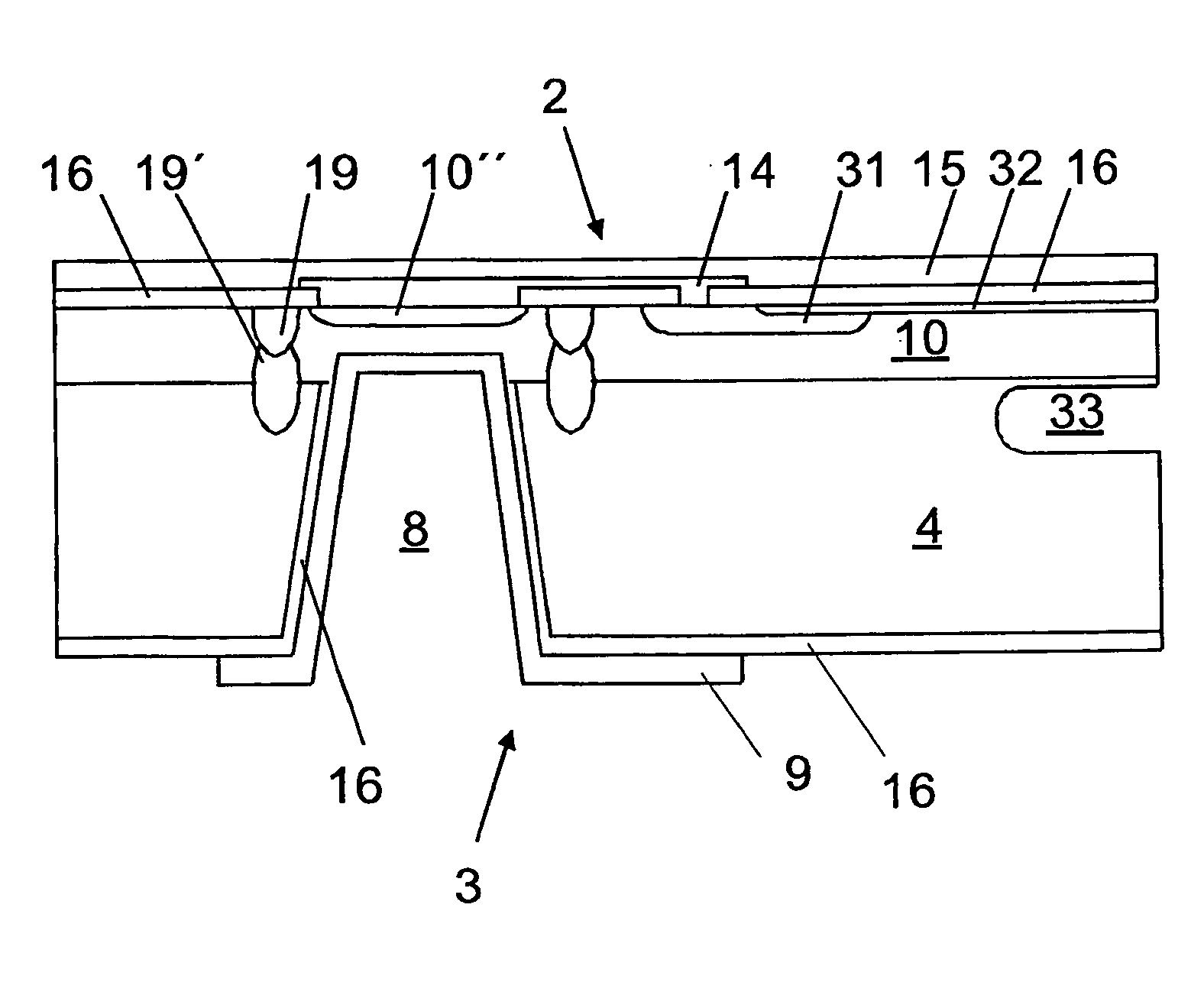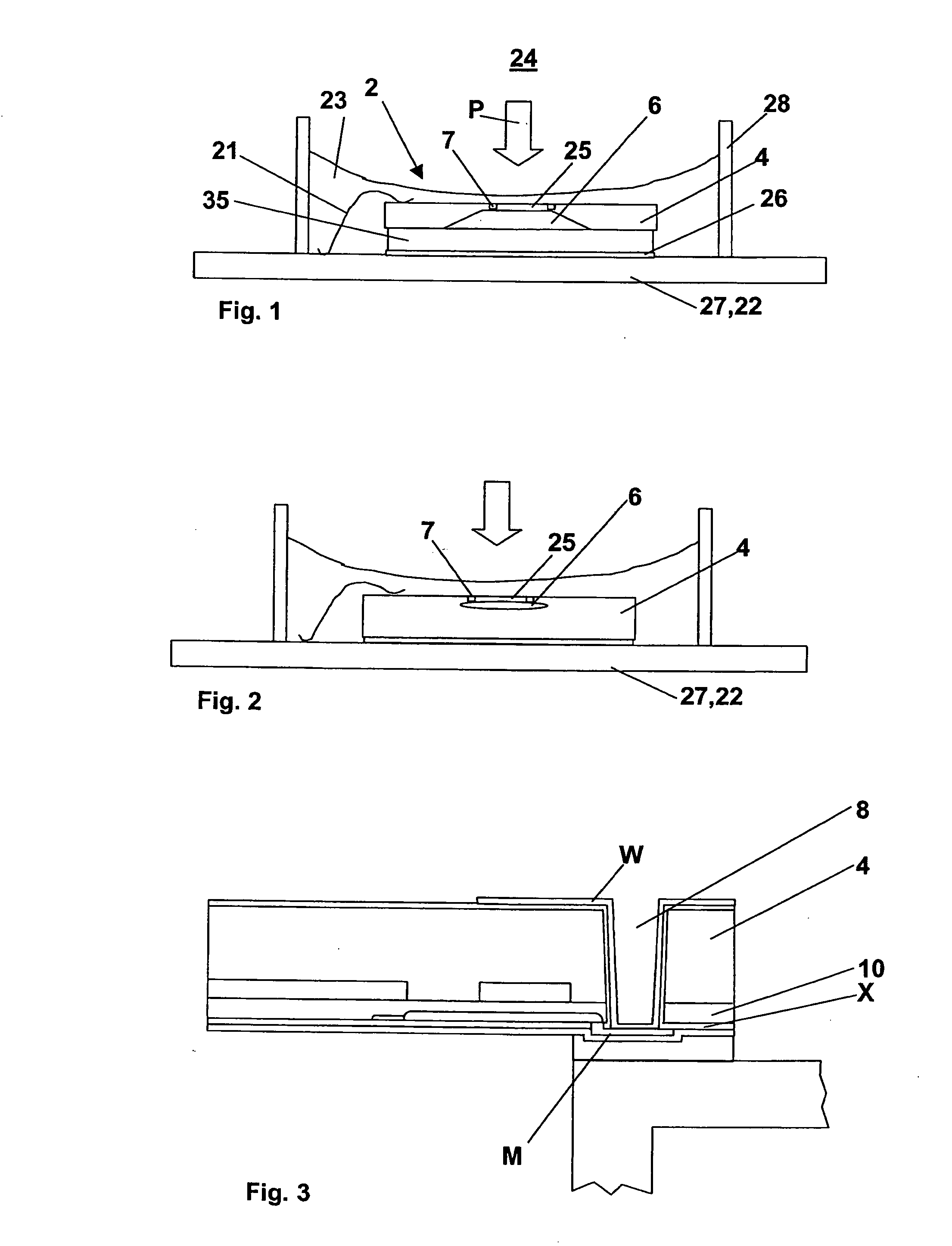Micromechanical component and method for producing a micromechanical component
a micro-mechanical and component technology, applied in the direction of fluid pressure measurement, fluid pressure measurement by electric/magnetic elements, instruments, etc., can solve the problems of gas diffuse into the gel, low stability, and damage to bonding wires running in the gel, so as to reduce stress coupling, high stability or load carrying capacity, and low strength
- Summary
- Abstract
- Description
- Claims
- Application Information
AI Technical Summary
Benefits of technology
Problems solved by technology
Method used
Image
Examples
Embodiment Construction
[0020]FIG. 1 shows the design of a micromechanical silicon pressure sensor having a functional pattern 7, in this case using piezoresistive converter elements. A substrate 4 has a front side 2, which faces a pressure medium 24. The pressure of the medium 24 acts on the pressure sensor in the direction of arrow P. On front side 2 of substrate 4 there is a sensor diaphragm 25 having functional patterns 7, in this case using piezoresistive converter elements. Behind sensor diaphragm 25, a recess 6 is etched anisotropically into substrate 4. Because of anodic bonding of substrate 4 onto a pyrex glass 35, recess 6 forms a cavity 6 between substrate 4 and pyrex glass 35. The composite of substrate 4 and pyrex glass 35 is connected to a printed-circuit board 22 or a housing 27, a premold housing, for instance, by an adhesive layer 26 or a solder layer 26. Front side 2 of substrate 4 is connected electrically conductively to printed-circuit board 22, using a bonding wire 21. A gel ring 28 o...
PUM
 Login to View More
Login to View More Abstract
Description
Claims
Application Information
 Login to View More
Login to View More - R&D
- Intellectual Property
- Life Sciences
- Materials
- Tech Scout
- Unparalleled Data Quality
- Higher Quality Content
- 60% Fewer Hallucinations
Browse by: Latest US Patents, China's latest patents, Technical Efficacy Thesaurus, Application Domain, Technology Topic, Popular Technical Reports.
© 2025 PatSnap. All rights reserved.Legal|Privacy policy|Modern Slavery Act Transparency Statement|Sitemap|About US| Contact US: help@patsnap.com



